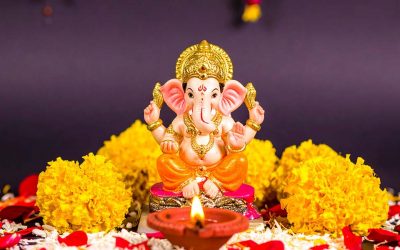Cleansing the Soul: The Spiritual Benefits of Gayatri Homam and Sukrutha Homam
In the vast and ancient tradition of Vedic rituals, two ceremonies stand out for their profound spiritual significance and holistic benefits: Gayatri Homam and Sukrutha Homam. These sacred fire rituals, deeply rooted in Hinduism, are performed with the intent of purifying the mind, body, and soul. By invoking the divine energies through meticulous rituals and chanting of mantras, these homams are believed to remove obstacles, cleanse negative influences, and promote overall well-being. In this blog, we will explore the intricate details and spiritual benefits of Gayatri Homam and Sukrutha Homam, delving into their origins, rituals, and the impact they have on devotees.
Understanding Homams
Homams, also known as Yajnas, are Vedic fire rituals that involve making offerings to the divine deities through the sacred fire. These rituals date back to ancient times and are mentioned extensively in the Vedas, the oldest sacred texts of Hinduism. The fire in the homam represents Agni, the fire god, who acts as a mediator between the human realm and the divine. Offerings such as ghee, herbs, and grains are made into the fire while chanting specific mantras to invoke the blessings of the gods.
The Essence of Gayatri Homam
Gayatri Homam is dedicated to the Gayatri Mantra, one of the most powerful and revered mantras in Hinduism. The Gayatri Mantra, composed of 24 syllables, is a prayer for spiritual awakening, enlightenment, and the purification of the soul. It is addressed to the Sun God, Savitr, and is considered the essence of the Vedas. The mantra goes as follows:
- Om Bhur Bhuvaḥ Swaḥ
- Tat-savitur Vareñyaṃ
- Bhargo Devasya Dhīmahi
- Dhiyo Yonaḥ Prachodayāt
Origins and Significance
The origins of the Gayatri Mantra can be traced back to the Rigveda, where it is mentioned as a powerful hymn composed by the sage Vishwamitra. The mantra is believed to possess immense spiritual potency, and its regular recitation is said to lead to divine wisdom and inner transformation. The Gayatri Homam, performed in honor of this mantra, amplifies its effects, creating a sacred atmosphere that facilitates spiritual growth and purification.
Rituals of Gayatri Homam
The Gayatri Homam begins with the preparation of the sacred fire, known as the Agni Kunda. The fire is kindled using specific woods and herbs that are considered pure and sacred. The priest, well-versed in Vedic rituals, initiates the ceremony by chanting the Gayatri Mantra and invoking the blessings of the deities. Offerings of ghee, herbs, and grains are made into the fire while reciting the mantra repeatedly. The rhythmic chanting, combined with the offerings, is believed to purify the environment and the participants’ minds.

Spiritual Benefits of Gayatri Homam
- Purification of the Mind and Soul: The chanting of the Gayatri Mantra during the homam creates a vibrational frequency that cleanses the mind and soul of negative energies and impurities. It enhances mental clarity and fosters a sense of peace and tranquility.
- Spiritual Enlightenment: The Gayatri Mantra is a prayer for enlightenment and wisdom. Performing the Gayatri Homam regularly is believed to open the pathways to higher consciousness, facilitating spiritual awakening and self-realization.
- Protection and Healing: The divine energy invoked during the homam acts as a protective shield, warding off negative influences and energies. It promotes physical and mental healing, enhancing overall well-being.
- Harmonious Environment: The powerful vibrations generated during the Gayatri Homam purify the surroundings, creating a harmonious and positive environment. This fosters peace and prosperity in the household and the community.
The Essence of Sukrutha Homam
Sukrutha Homam is another significant Vedic ritual performed to cleanse negative karma and invoke positive energies. The term “Sukrutha” refers to virtuous deeds or good karma. This homam is dedicated to the deities who govern dharma (righteousness) and karma (actions). It aims to neutralize past negative actions and promote positive outcomes in one’s life.
Origins and Significance
The concept of karma, the law of cause and effect, is central to Hindu philosophy. According to this belief, one’s actions (both good and bad) have consequences that manifest in this life or future lives. Sukrutha Homam is performed to balance the karmic scales, neutralizing the effects of negative deeds and amplifying the benefits of virtuous actions. This homam is particularly beneficial for those seeking to overcome obstacles, achieve success, and lead a life aligned with dharma.
Rituals of Sukrutha Homam
The Sukrutha Homam involves several steps, beginning with the invocation of the deities and the preparation of the sacred fire. The priest, well-versed in the Vedic scriptures, chants specific mantras to invoke the blessings of the gods and goddesses associated with karma and righteousness. Offerings such as ghee, grains, and herbs are made into the fire, symbolizing the surrender of negative karma and the acceptance of divine grace.
The homam also includes the chanting of the Mahamrityunjaya Mantra and other powerful Vedic hymns that purify the mind and soul. The participants meditate and focus on their intentions, seeking forgiveness for past misdeeds and resolving to lead a righteous life. The entire process is conducted with great devotion and reverence, creating an atmosphere of spiritual upliftment.

Spiritual Benefits of Sukrutha Homam
- Karmic Cleansing: Sukrutha Homam is primarily performed to cleanse negative karma. The fire rituals and mantra chanting help neutralize the effects of past misdeeds, paving the way for positive karmic outcomes.
- Removal of Obstacles: By invoking the blessings of the deities, the homam helps remove obstacles and challenges in one’s life. It is believed to bring about a smoother path to success and fulfillment.
- Enhancement of Virtuous Deeds: The homam amplifies the effects of good karma, promoting positive actions and thoughts. It encourages individuals to lead a life of virtue, compassion, and righteousness.
- Spiritual Growth: Sukrutha Homam fosters spiritual growth and self-awareness. The purification of the mind and soul leads to a deeper understanding of oneself and the universe, promoting inner peace and harmony.
- Health and Well-being: The sacred fire and mantras have a healing effect on the participants, promoting physical, mental, and emotional well-being. The homam acts as a conduit for divine healing energies.
The Interconnectedness of Gayatri Homam and Sukrutha Homam
While Gayatri Homam and Sukrutha Homam are distinct rituals, they share a common goal of spiritual purification and enlightenment. Both homams involve the invocation of divine energies through fire rituals and mantra chanting, creating a powerful spiritual atmosphere that promotes overall well-being.
Gayatri Homam focuses on invoking the blessings of the Sun God through the chanting of the Gayatri Mantra. It is primarily aimed at purifying the mind and soul, fostering spiritual enlightenment, and creating a harmonious environment. The mantra’s vibrations cleanse negative energies and enhance mental clarity, paving the way for inner transformation.
Sukrutha Homam, on the other hand, is dedicated to balancing karma and promoting righteousness. It focuses on neutralizing negative karma and amplifying virtuous deeds, thereby removing obstacles and fostering positive outcomes in life. The homam’s rituals and mantras purify the participants’ karmic energy, promoting spiritual growth and well-being.
Together, these homams offer a comprehensive approach to spiritual cleansing and growth. By performing Gayatri Homam and Sukrutha Homam, devotees can achieve a state of inner peace, clarity, and harmony. The rituals help align their actions with dharma, fostering a life of virtue and righteousness.
The Modern Relevance of Gayatri Homam and Sukrutha Homam
In today’s fast-paced and often stressful world, the practice of ancient Vedic rituals like Gayatri Homam and Sukrutha Homam holds significant relevance. These rituals offer a sanctuary of peace and spiritual rejuvenation, providing a means to reconnect with one’s inner self and the divine.
- Stress Relief: The chanting of mantras and the sacred fire rituals create a calming and soothing atmosphere, reducing stress and anxiety. The vibrations generated during the homam have a therapeutic effect on the mind and body.
- Spiritual Connection: In the hustle and bustle of modern life, it is easy to lose touch with one’s spiritual essence. Performing these homams helps individuals reconnect with their spiritual roots, fostering a deeper sense of purpose and fulfillment.
- Community and Unity: Homams are often performed in the presence of family and community members, fostering a sense of togetherness and unity. The collective chanting and participation create a bond of shared spiritual experience.
- Holistic Well-being: The rituals promote holistic well-being by addressing the physical, mental, and spiritual aspects of an individual. The purification process leads to overall health and vitality.
- Environmental Harmony: The offerings made during the homams, such as ghee and herbs, purify the environment by releasing positive energies. The sacred fire acts as a conduit for these energies, promoting harmony in the surroundings.

Conclusion
Gayatri Homam and Sukrutha Homam are profound Vedic rituals that offer immense spiritual benefits. By invoking divine energies through the sacred fire and chanting powerful mantras, these homams cleanse the soul, remove negative karma, and promote overall well-being. The rituals foster spiritual growth, inner peace, and a deeper connection with the divine.
Incorporating these ancient practices into modern life can lead to a more balanced and fulfilling existence. Whether seeking to overcome obstacles, achieve success, or attain spiritual enlightenment, performing Gayatri Homam and Sukrutha Homam provides a sacred path to holistic well-being. As we embrace these timeless rituals, we honor the wisdom of our ancestors and nurture our spiritual essence, leading to a life of harmony, virtue, and divine grace.






